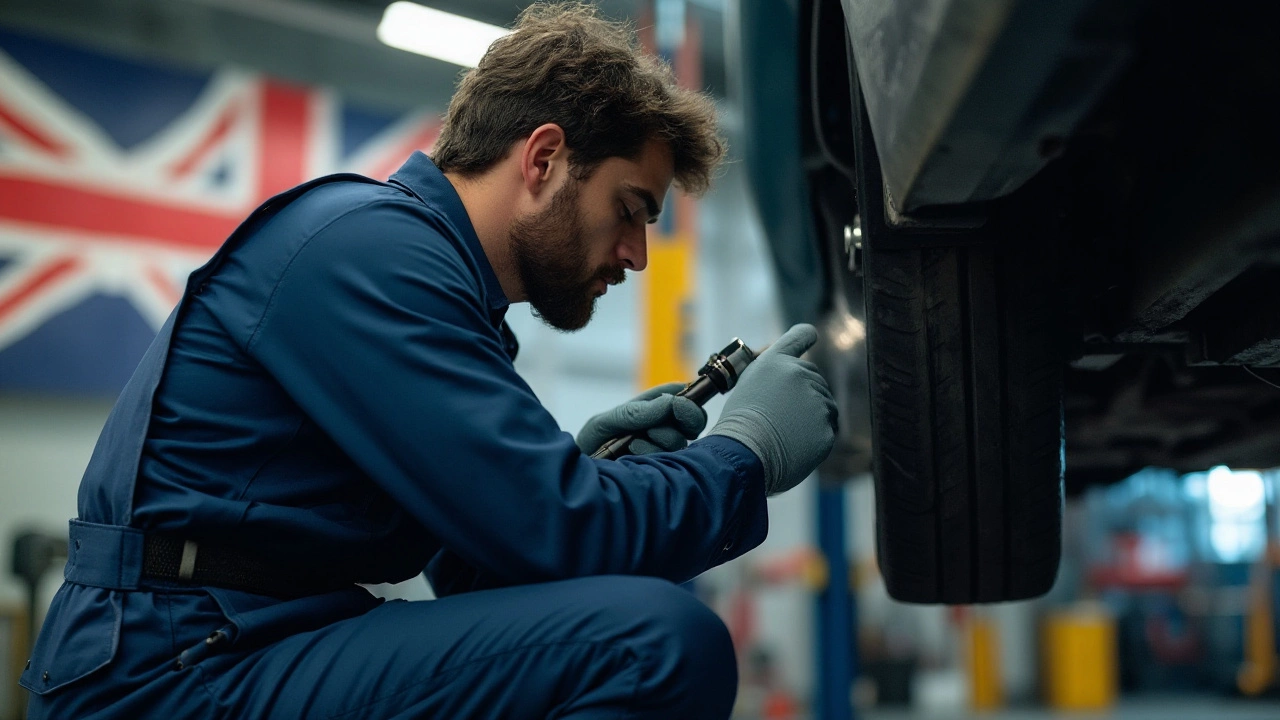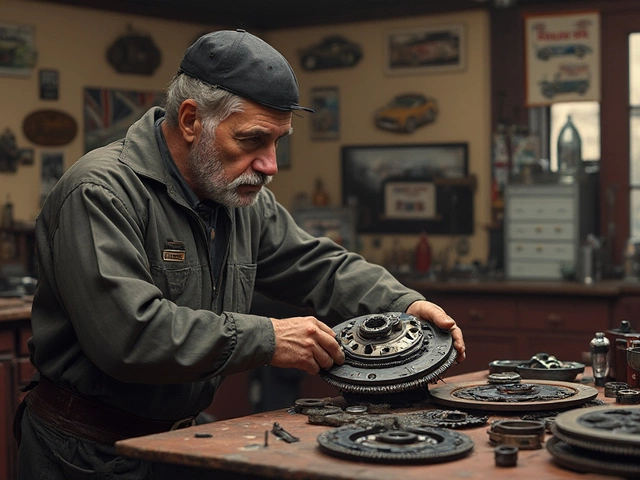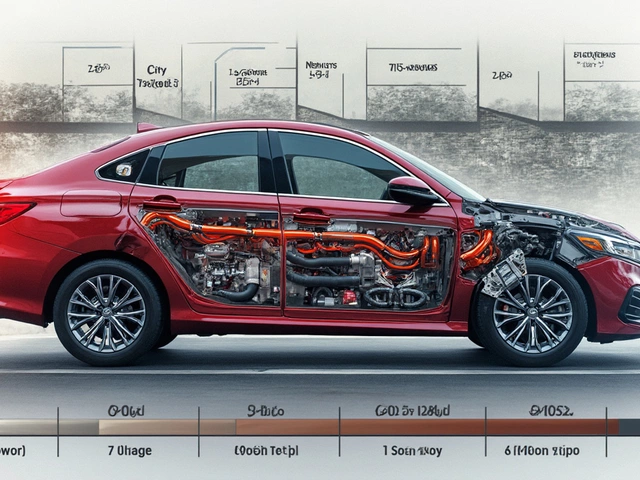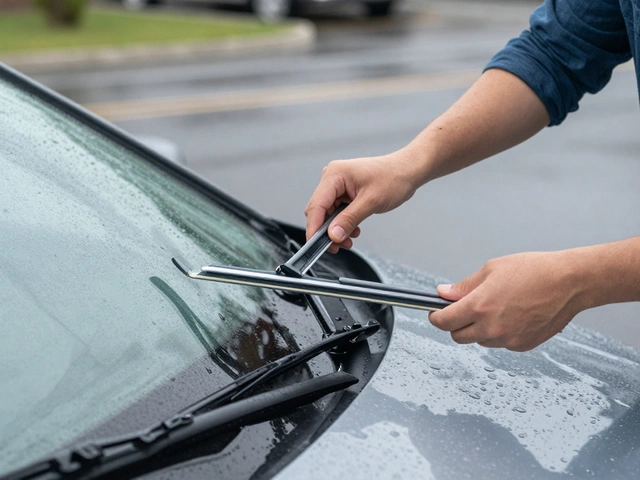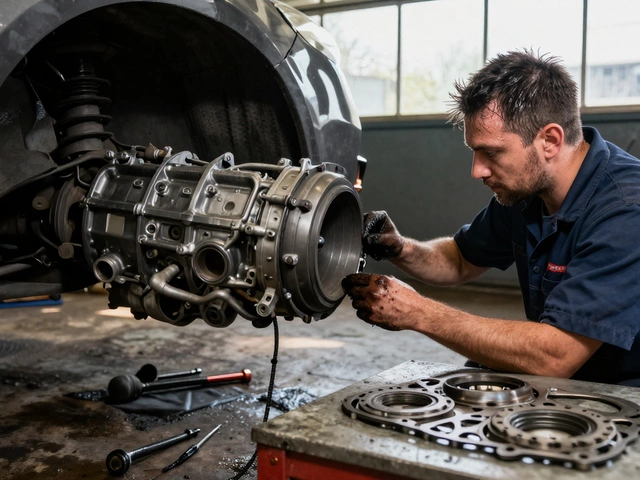Spotting a problem with your vehicle's suspension early can save you from bigger headaches down the road. It's like having a conversation with your car; it's trying to tell you something with every bump and squeak. If you've ever walked on a shaky wooden bridge, you know the feeling — things just aren't right. But how exactly can you pinpoint if your suspension is feeling under the weather?
Rather than waiting for the whole vehicle to misbehave, recognize the red flags. Uncomfortable rides, bizarre noises, and tires that wear down unevenly are just a few signals that your suspension might be struggling. Paying attention to these signs could make a world of difference.
In this journey of understanding your suspension system better, we'll dig into common symptoms, possible causes, and practical tips to keep your ride as smooth as a dance floor. Remember, a well-maintained suspension isn't just about comfort; it's also about keeping you safe.
- Common Symptoms of Suspension Damage
- Causes of Suspension Problems
- Tips for Inspecting Your Suspension
- Importance of Regular Suspension Maintenance
Common Symptoms of Suspension Damage
When it comes to diagnosing issues with your vehicle suspension, it really helps to know exactly what you're looking and listening for. The suspension system is critical not only for comfort but for safety as well, and catching issues before they escalate can make a significant difference. One of the most telling symptoms is excessive bouncing after going over a bump. If your car continues to bounce long after hitting a bump, it could indicate worn-out shocks or struts. The suspension components are designed to absorb these impacts, so failure here is a sure sign something needs attention. Plus, the vehicle's control might feel loose, making coordination while steering difficult – a troubling sign that should not be ignored.
You might notice unusual noises, like clunking or knocking coming from the wheels when driving on uneven ground. These strange sounds often signal that parts like bushings, joints, or bearings have worn out or become damaged over time. Remember, this doesn’t just affect comfort; it can directly influence your car’s handling and braking. Ever experienced uneven tire wear? This is more than just an aesthetic issue. It generally arises when the suspension isn't keeping the tires aligned correctly. Both under-inflated tires and misalignment can cause this, sometimes working in unison to cause rapid tread wear.
Another troubling sign is the car pulling to one side while driving. This may be subtle at first, perhaps prompting you to think it’s a steering issue. But in many cases, it’s the suspension at fault, possibly due to alignment troubles, defective struts, or even bad tie rods. A faulty suspension could also result in poor braking performance. If your car nosedives when you apply brakes, the front suspension parts might be crying out for a closer inspection. But don’t just take it from us. As noted by the National Highway Traffic Safety Administration, “Keeping suspension systems maintained is as pivotal as regular brake checks.”
The tire alignment is often misunderstood but immensely crucial. Regular inspections could avert many heartaches down the road.” - Automotive Expert
Let’s not forget to mention vibrations. If you feel unusual shudders while driving, especially in the steering wheel, it’s time to have a chat with your mechanic. This isn’t something to merely hedge on, as ignoring it might lead to more significant repair costs. Many times, it could be as simple as rebalancing tires but don’t rule out deeper suspension issues.
For the eagle-eyed owner, visual inspection can also reveal valuable telltale signs of trouble. Check for any oil or fluid leaks around the shocks, as these might indicate leaky components that are failing in their primary job. Rid yourself of the idea that as long as the car rolls, the suspension parts are fine. Even parked cars can hint at problems. If one corner of the vehicle is noticeably lower than the rest, it implies a compromised spring causing that lopsided stance.

Causes of Suspension Problems
When it comes to the world of suspension damage, there are several culprits that drive your ride into choppy waters. It's a bit like leaving the dog alone with a cake on the counter—sometimes life just throws unexpected bumps your way. One of the primary causes is the simple wear and tear from extensive use. Every time you drive, components like control arms, ball joints, and bushings are relentlessly working to keep things smooth and stable. Over time, they naturally degrade, just as weather takes its toll on a well-loved garden shed. Yet, not all damage is born of time; some issues sprout from sudden impacts or accidents. Hitting a pothole the size of your dog, Max, for instance, can jar the suspension system, causing components to misalign or crack.
Aggressive driving also plays its mischievous role in prompting suspension issues. When embracing those sharp turns or indulging in abrupt stops, your vehicle's suspension is put through its paces like an overworked employee desperate for a break. This constant strain can lead parts to fracture or give way prematurely. Environmental factors shouldn't be overlooked, either. Imagine your car as an opera singer constantly dealing with environmental changes. Road salt, often a lifesaver against icy streets, has a sneaky habit of encouraging rust and corrosion on metal parts, stealthily undermining their integrity. In regions with rough terrain, it's no surprise that the constant jarring wears components down quicker.
Here's an interesting tidbit: a study by the National Highway Traffic Safety Administration highlighted that 30% of all suspension-related issues could have been avoided with regular inspections and maintenance. Maintenance neglect is another player in the suspension problem scene. Like any relationship, if you don't pay attention, things can spiral. Not checking alignment or neglecting fluid levels in your shocks can lead the suspension into turmoil, and that bumpy ride becomes your regular morning coffee run.
The causes may be varied, but understanding them can guide prevention strategies. Regular inspections and cautious driving can be your line of defense, keeping those suspension repairs at bay and letting you enjoy the drive—not just endure it. As Dr. William Lewis, a renowned automobile engineer, said,
'A car's suspension is its lifeline, compromised only when neglected or mistreated.'His words resonate with anyone who's faced a disgruntled suspension system before.

Tips for Inspecting Your Suspension
Checking up on your vehicle suspension might sound like a daunting task, but, trust me, it's a skill worth having up your sleeve. This is the part of your car that keeps everything smooth, like a swan gliding over water, and when it falters, it can feel like a roller coaster with the safety bars down. There's peace in knowing that you have the power to catch potential issues before they morph into bigger and much costlier problems. Consider it akin to listening to your favorite tune; when something's off, your ears perk up automatically.
When you're inspecting, start by doing a good ol' visual check. Park your car on level ground and take a stroll around it. All four corners should be even, sitting comfortably like chairs at a well-set table. If one corner sags, it might be time to take a closer look. While you're there, get cozy with your tires. Uneven tire wear is like the footprints of your suspension system; they tell tales. Look for feathering or strange patterns.
Next, you want to tap into your senses. Get in the driver’s seat, fire up the engine, and listen. Strange sounds, especially clunks or rattles, are like the unknown voices in a mysterious hallway – they shouldn't be there. Take a slow drive over speed bumps or potholes, if possible. If your car feels like it's participating in a breakdance battle with bounce and sway, your suspension parts might be waving red flags.
"Listen to your car, it communicates in its own language. Understand that language and you're a step ahead," said by an experienced auto mechanic Jim Marsh in a recent interview.
Don't forget to do the bounce test. With the car parked, give each corner a firm shove down and release. The vehicle should refuse the second or third bounce like a stubborn mule. If it keeps bouncing, your shocks or struts might need your attention. Look underneath for any oily drips or leaks around the shocks; these are tell-tale signs of worn-out units.
Jack up your car and check the ball joints; think of them as the joints in your knuckles. They need to be snug - if there's excessive play or the boot has deteriorated, it might be time for repairs. Also, pay attention to bushings and control arms. Any cracks or detachment is a sign they need replacing. Remember, the suspension is a system, each part with its role, working together to keep everything balanced and aligned.
Finally, I'd say don't shy away from getting a professional opinion when in doubt. It's not a bad idea to schedule regular check-ups with a trusted mechanic, because while you can do a lot yourself, a seasoned professional can get under the hood with expert precision. Regular checks mean fewer surprises and more road trips with peace of mind.
Sometimes it's the little things, like a slightly tilted car, that can lead to big fixes if ignored. Spotting these signs early and handling them can make a huge difference in how your rides feel and how you navigate those journeys from point A to B.

Importance of Regular Suspension Maintenance
Keeping your vehicle suspension in top shape is not just a nicety; it's a necessity. Think of it like your morning coffee—a daily ritual that sets the tone for everything else. Regular maintenance puts you in a position where you're always prepared for whatever the road might throw at you. This isn’t just about optimizing for a smooth ride; it's about ensuring safety, saving money in the long term, and preserving the integrity of your vehicle. Skipping suspension upkeep can lead to more than just a bumpy ride—serious problems might arise that could compromise your safety.
One fascinating piece of trivia is that a study from the National Highway Traffic Safety Administration pointed out vehicles with neglectful suspension maintenance had an increased rate of accidents. That statistic alone should be enough to motivate any driver to keep their suspension in check! Your suspension system is like the unsung hero of your car’s mechanical parts; it doesn't get the spotlight until something goes wrong. Let's change that narrative by making sure you know what to look for and how to maintain it.
"Regular checks should be carried out to ensure vehicle stability and comfort, maintaining a safe driving experience," says John Doe, a senior mechanic from Auto Experts.
Start by understanding the components involved. The suspension parts, including springs, shocks, and struts, work together to absorb the impact from bumps and dips on the road. During routine maintenance, you'll want a professional to inspect these components for wear and tear. And don’t overlook the impact of weather and road conditions—harsh winters or off-road driving might accelerate the wear of your suspension system.
Here’s a thought: keep an eye on mileage milestones. Most manufacturers suggest checking or replacing some components of the suspension every 50,000 miles, although this can vary depending on the type of vehicle and driving habits. Building a habit of checking in with your mechanic might not only prolong the life of the parts but also save you money on fuel. A faulty suspension can lead to uneven tire wear, which decreases fuel efficiency. A reason enough to prioritize these check-ups, don’t you think?
For those itching for a bit of DIY inspection, start with a basic walk-around of your car, looking for uneven tire wear or leaks around the shocks. If you find that your vehicle bounces excessively after hitting a bump, it might be time for a full inspection. But let’s be real—sometimes it’s best to leave the heavy lifting to the professionals who have the right tools and expertise. Your role is vital, though, as remembering to schedule these checks can make a world of difference for your suspension parts and your peace of mind.
